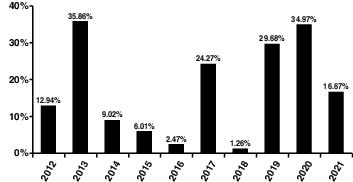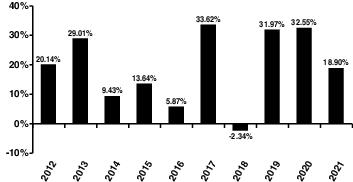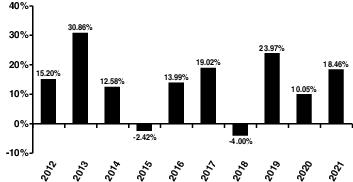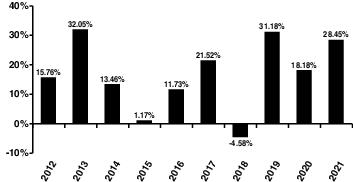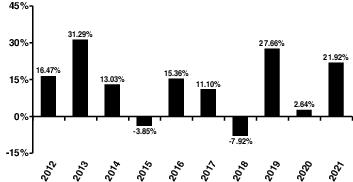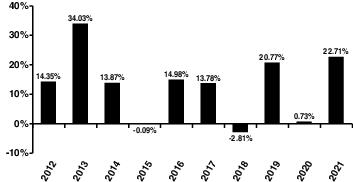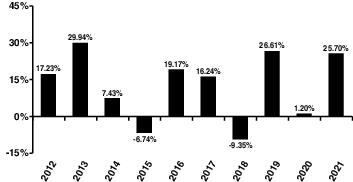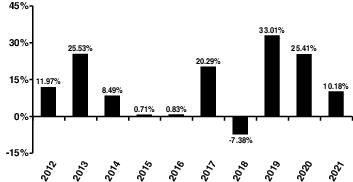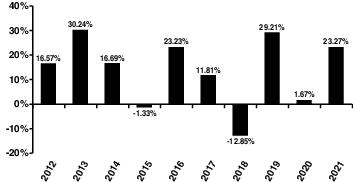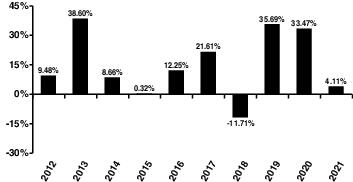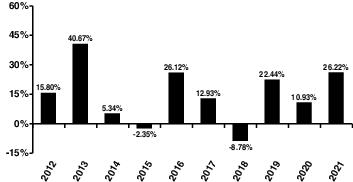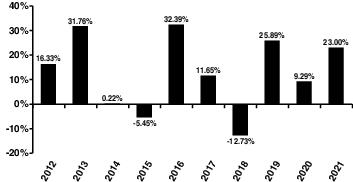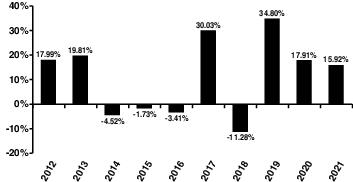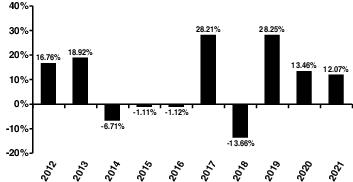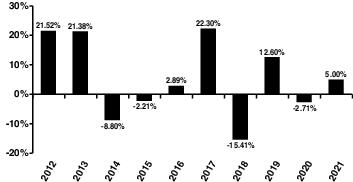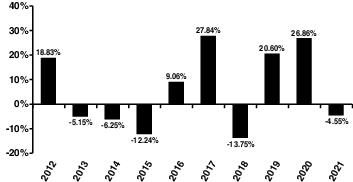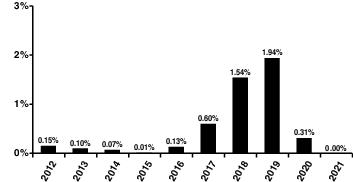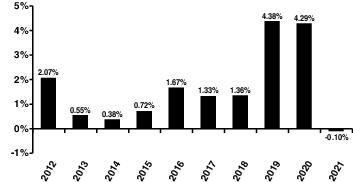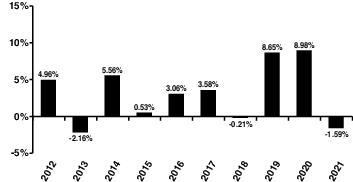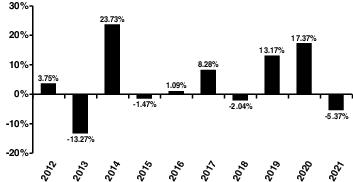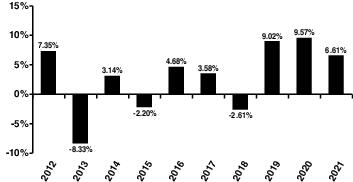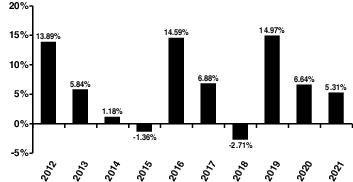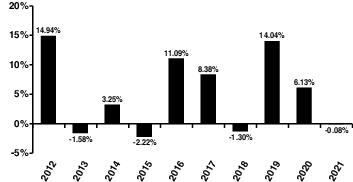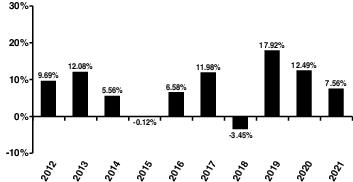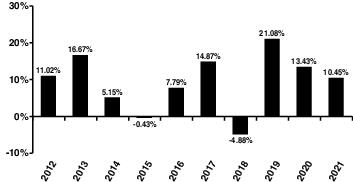Dodge & Cox, 555 California Street, San Francisco, California 94104, provides investment services to the International Equity Portfolio pursuant to an investment sub-advisory agreement. Dodge & Cox, a California corporation, is one of the oldest professional investment management firms in the United States, having acted continuously as investment managers since 1930. Dodge & Cox’s activities are devoted to investment research and the supervision of investment accounts for individuals and institutions. For the services provided for the International Equity Portfolio, Mason Street Advisors pays Dodge & Cox a fee at an annual rate of 0.60% of the Portfolio’s net assets on the first $500 million, 0.45% on assets over $500 million and reset to 0.45% at $1.5 billion (flat rate applicable to all portfolio assets). As of December 31, 2022, assets under management were approximately $322.9 billion.
Federated Investment Management Company (“Federated”), 1001 Liberty
Avenue, Pittsburgh, Pennsylvania 15222-3779, provides investment services to the High Yield Bond Portfolio pursuant to an investment sub-advisory agreement. Federated is an indirect, wholly-owned subsidiary of Federated Hermes, Inc. (“FHI”). FHI is a client-driven, multiproduct, and multi-strategy investment manager. FHI provides world-class active investment management and engagement services to more than 11,000 institutions and intermediaries including corporations, government entities, insurance companies, foundations and endowments, banks and broker/dealers. Federated Advisory Services Company, an affiliate of Federated, provides certain support services to Federated. The fee for these services is paid by Federated and not by High Yield Bond Portfolio. For the services provided for the High Yield Bond Portfolio, Mason Street Advisors pays Federated a fee at the annual rate of 0.40% of the Portfolio’s net assets on the first $50 million of assets, reduced to 0.25% on the next $200 million, reduced to 0.20% on the next $250 million, reduced to 0.15% on the next $500 million, reduced to 0.125% on the next $500 million and 0.10% on assets over $1.5 billion. As of December 31, 2022, assets under management were approximately $____ billion.
FIAM LLC (“FIAM”), 900 Salem Street, Smithfield, Rhode Island, 02917, provides investment services to the International Growth Portfolio, pursuant to an investment sub-advisory agreement. FIAM and its FIAM® Group affiliates provide investment management services to institutional investors worldwide. FIAM is an indirectly held, wholly owned subsidiary of FMR LLC. For the services provided on behalf of the International Growth Portfolio, Mason Street Advisors pays FIAM at the annual rate of 0.42% on the first $100 million of the Portfolio’s assets, 0.41% on the next $100 million, 0.39% on the next $300 million, and 0.38% on assets in excess of $500 million. FIAM began providing sub-advisory services to the International Growth Portfolio as of July 31, 2015. As of December 31, 2022, FIAM had approximately $167.7 billion in assets under management.
Fiduciary Management, Inc. (“FMI”), 100 East Wisconsin Avenue, Suite 2200, Milwaukee, Wisconsin, 53202, serves as sub-adviser for the Large Cap Blend Portfolio of the Fund. FMI has been an investment adviser since 1980. FMI is owned by Ted D. Kellner, Patrick J. English, and certain other key employees. Effective July 1, 2022, for fee services provided to the Large Cap Blend Portfolio, Mason Street Advisors pays FMI at an annual rate of 0.45% on the first $25 million of the Portfolio’s assets, 0.40% on the next $25 million, 0.38% on the next $50 million and 0.30% on assets in excess of$100 million. As of December 31, 2022, assets under management were approximately $13.2 billion.
Loomis, Sayles & Company, L.P. (“Loomis Sayles”), One Financial
Center, Boston, Massachusetts 02111, provides investment services to the Focused Appreciation Portfolio, pursuant to an investment sub-advisory agreement. Loomis Sayles is a Delaware limited partnership. Loomis Sayles’ sole general partner, Loomis, Sayles & Company, Inc. is directly owned by Natixis Investment Managers, LLC (“Natixis LLC”). Natixis LLC is an indirect subsidiary of Natixis Investment Managers, an international asset management group based in Paris, France, that is in turn owned by Natixis, a French investment banking and financial services firm. Natixis is wholly owned by BPCE, France’s second largest banking group. BPCE is owned by banks comprising two autonomous and complementary retail banking networks consisting of the Caisse d’Epargne regional savings banks and the Banque Populaire regional cooperative banks. The registered address of Natixis is 30, avenue Pierre Mendès France, 75013 Paris, France. The registered address of BPCE is 50, avenue Pierre Mendès France, 75013 Paris, France. Founded in 1926, Loomis Sayles is one of the oldest investment advisory firms in the United States. For the services provided on behalf of the Focused Appreciation Portfolio, Mason Street Advisors pays Loomis Sayles at the annual rate of 0.34% on the first $500 million of the Portfolio’s assets and 0.33% on assets in excess of $500 million. Loomis Sayles began providing sub-advisory services to the Focused Appreciation Portfolio as of July 31, 2015. As of December 31, 2022, Loomis Sayles had $282.1 billion in assets under management.
